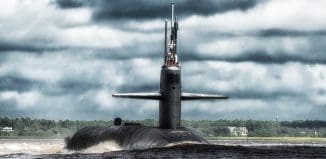New System Will Change Navy Training
This post is also available in:  עברית (Hebrew)
עברית (Hebrew)
Virtual Reality and light detection technologies will change US Navy training. Navy engineers used 3D imaging capabilities of LIDAR (Light Detection and Ranging) technology to measure designated spaces on board several US Navy ships down to the exact millimeter. Then, virtual reality and virtual environment software processed the hundreds of gigabytes worth of scanned data into a less than one hundred gigabyte file of a virtual reality model of the scanned areas.
A Secretary of the Navy 2016 Innovation Award was presented to a 3D scanning team from the Space and Naval Warfare Systems Command (SPAWAR) recently for their use of LIDAR technology to make virtual reality scans a tool for future onboard technological development and sailor training. “LIDAR technology requires only a small team of two to three people who know how to operate the equipment and can create an accurate virtual 3D representation of a ship’s installation compartment,” Lt. Jessica Fuller, a member of the SPAWAR 3D scanning team, told defensesystems.com.
The LIDAR system uses a special, near-infrared laser that emits electromagnetic pulses in the form of light and measures the return wavelengths to discern the distance and 3D shape of objects in its path. SPAWAR reports that all the 3D scanning team needed to use was off-the-shelf technology and software to ensure innovative results. Once the model was created, sailors could don the virtual reality goggles headpiece and virtually navigate through a remote part of the ship.
“In addition to using these scans for installations…sailors can now train ‘virtually’ on their ship, in their exact spaces, with their exact equipment because of these scans,” explained Heidi Buck, Director of Battlespace Exploitation of Mixed Reality Lab. “Also, these new systems can be inserted into the ‘virtual’ ship environment for design and testing purposes.”
The next goal is to be able to input the scan data into augmented reality software, which will allow sailors to access 3D augmented reality maps and scans while on the job, giving the sailors a mobile capability to better understand and maintain the ship, according to Dr Mark Bilinski, a Mathematician at SPAWAR.
The LIDAR scanning itself took only nine days when first performed on the USS San Diego, and the other two vessels were scanned and modeled within the same year. There is no timeline for implementing the new method and technology across the Navy, however, SPAWAR officials are confident that it will become a model for Navy virtual innovation.































